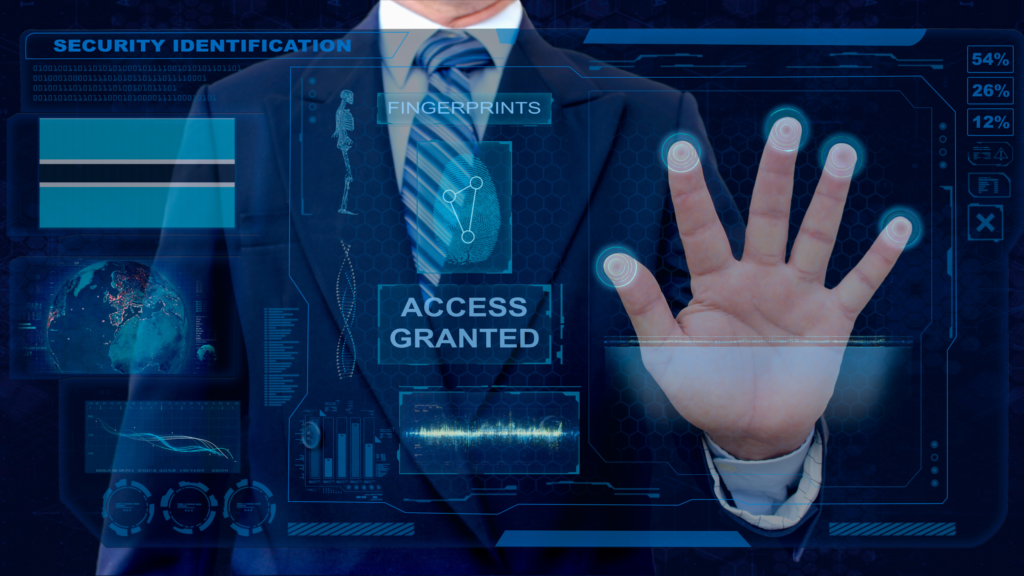In this increasingly connected world, everything is becoming increasingly digitized which necessitates cybersecurity to widen its landscape. While traditional security measures fail to keep pace with the latest threats, a new contender is emerging: Behavioural Biometrics Cybersecurity.
Behavioral biometrics differs from physical biometrics which consists of the evaluation of human traits such as fingerprints and facial recognition – physical recognizable information. Since it is a unique method of authentication which uses the data collected from the behavior of a user to verify them. Everyone uses technology in a unique way and biometrics can detect these patterns and create an image that’s almost impossible to duplicate.
Unveiling The Significance Of Behavioural Biometrics Cybersecurity
While the technology being an online data guardian, it plays an essential role in the cybersecurity field!
Robust Identity Verification:
Behavioural Biometrics play an important role to ensure an individual’s clear identity. The process is performed only a single time, typically in the initial registration phase and is essential in the establishment of the future authentication methods. Due to the uniqueness of biometric characteristics, there is an increased chance of a reliable verification.
Enhanced Authentication:
Biometrics elevate cybersecurity authentication to a new level. Because biometric identifiers are distinct–no two fingerprints, or voice patterns are identical–the risk of being accessed by someone else significantly decreases.
Multi-Factor or Multi-Modal Biometric Authentication:
The potential of biometrics is evident when you combine several modes of authentication factors. This method – also known as multimodal authentication, mixes different types of biometric information like fingerprint scanning, facial recognition or even integrates biometric data with traditional security factors like passwords. This results in a multi-layered security, similar to an electronic fortress which is much harder for cybercriminals to determine.
Continuous Monitoring:
Biometrics does not stop at access control for one time. For biometrics that are based on behavior, such as keystroke dynamics or touch-dynamics we’re focusing on ongoing real-time authentication of users. The system monitors your individual behavior patterns throughout the session and will be able to detect any changes that are not normal.
How Does Behavioral Biometrics Work To Collect Data?
The technology creates your profile based on factors like your typing speed, the time you hold a key for or the keystrokes patterns you use, etc. The Behavioural Biometrics phenomenon examines data using AI and ML technology and algorithms. It means that when you try to log in, it automatically gives you a risk score based on how closely your current behaviour relates to your previous one.
Administrators can establish and apply thresholds that define how much over or below a specific number your risk score may be. If anomalies get detected about your rising score over the threshold set and you’re denied access, you’ll be notified or asked to verify your identity with an additional security factor.
Moreover, many tools combine this risk scoring strategy with contextual variables to improve the safety of accounts. These could include the location, WiFi network, known/unknown devices, and the time you typically access specific accounts and perform specific actions.
Benefits of Implementing Behavioural Biometrics in Cybersecurity
The key benefits that Behavioural Biometrics bring to the Cybersecurity include:
Enhanced security:
Behavioral biometrics add an extra security layer which is hard for attackers to duplicate or to bypass. Since these characteristics are distinctive to each person, the impersonation process becomes extremely difficult.
Continuous monitoring:
Biometrics based on behavioral patterns allow for the continuous monitoring of user activities which lets organizations understand and address threats immediately, instead of relying upon regular password modifications.
Convenience for the user:
As opposed to passwords and PINs that can be lost or spelled incorrectly, behavioral biometrics are more convenient for users. Users do not have to keep track of complicated passwords, which makes the authentication process much more easy.
Reduced Friction:
Traditional authentication methods can introduce difficulties for users. However, behavioural biometrics can help reduce the amount of friction and increase satisfaction without risking security.
A Passive Technology:
This type of authentication is non-intrusive, requires no technical skills, and takes minimal time or effort to make use of. This process involves collecting information and establishing an account happens in the background without users even realizing.
Rapid and low-cost deployment:
Since the technology works with existing devices that are already in use, there is no reason to buy expensive new sensors.
Behavioral Biometrics To Prevent Fraud
Since the use of behavioral biometrics depends on the unique user behavior, fraud prevention could prosper by using information from biometric authentication using behavioral biometrics in various ways.
The most common uses of such data are analyzing user behavior across various channels and also identifying uncommon patterns during account log-in activity or linking customer data with their behavior fingerprint login details. The unique approach generates scores based on an individual’s past behavior. Behavioral analytics takes into account a larger background.
In addition to the factors mentioned to verify the authenticity of a user’s behavior, analysis also forms a base around the time at which users typically log into their account. Moreover, the analysis also includes checking the IP address, geolocation or even a new payment method could indicate fraud. The cross-channel analysis of interactions with other apps available on the device also gets considered.
Conclusion
Being in the blanket of a new era where your digital identity is secure and unique, all thanks to the incredible possibility of Behavioural Biometrics security. A biometric security system taking advantage of the uniqueness of humans’ physical and behavioral characteristics, can change our cyber defenses making them more durable and personalized. The method we use to identify ourselves is set to develop as the industry tries to find the equilibrium between security and a fantastic user experience.



